Mardi Himal Trek in January: Weather, Difficulty, Temperature, Travel Tips, and More – Step into a winter wonderland, where snow-capped peaks glisten under the pale winter sun and crisp, fresh air fills your lungs. If you’re an adventure seeker looking for an exciting trek off the beaten path, then the Mardi Himal Trek in January is the perfect choice.
While most trekkers opt for popular routes, this hidden gem offers a unique and unforgettable experience in the tranquil Annapurna Region of Nepal. So, bundle up and embark on a thrilling journey through picturesque landscapes, charming villages, and awe–inspiring vistas.
The crowd at the Mardi Himal Trek in January
The Mardi Himal Trek in January, which is during the winter season typically has fewer crowds compared to the peak trekking seasons in Nepal. However, it’s important to note that the exact crowd levels can vary depending on various factors such as current travel trends, weather conditions, and any recent developments that may attract more trekkers.
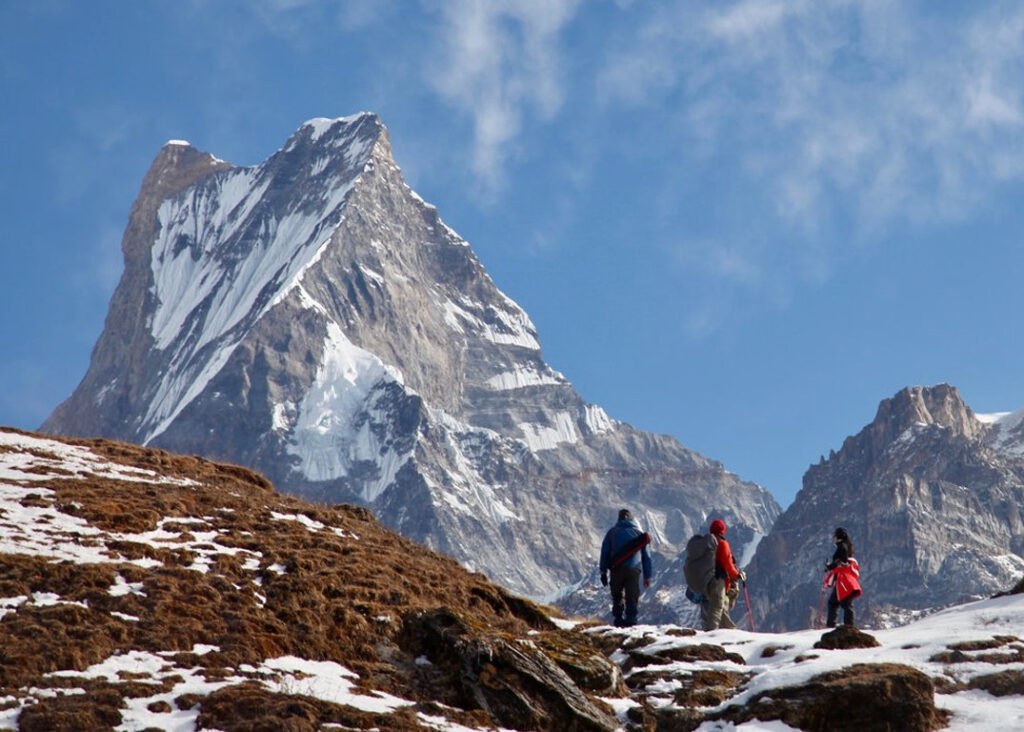
January falls within the winter season in Nepal, which means you can expect colder temperatures and occasional snowfall, especially at higher altitudes. This season is considered an off-peak time for trekking in the region, so you are likely to encounter fewer trekkers on the Mardi Himal trail compared to popular seasons like spring (March to May) and autumn (September to November).
Weather Conditions at Mardi Himal Trek in January
Mardi Himal Trek is a popular trekking destination located in the Annapurna region of Nepal. It offers stunning views of the Annapurna massif including the majestic Machapuchare (Fishtail) peak. The weather conditions in January can vary, and it is essential to be prepared for the cold temperatures and potential snowfall.
Also Read: Mardi Himal Trek vs Annapurna Base Camp Trek
In January, Mardi Himal experiences the winter season. Here are some key details about the weather conditions you can expect during this time:
Temperature
January is the coldest month in Mardi Himal. The daytime temperatures at lower altitudes can range from 5 to 10 degrees Celsius (41 to 50 degrees Fahrenheit). However, as you ascend higher, especially above 3,000 meters (9,800 feet), the temperatures can drop significantly.
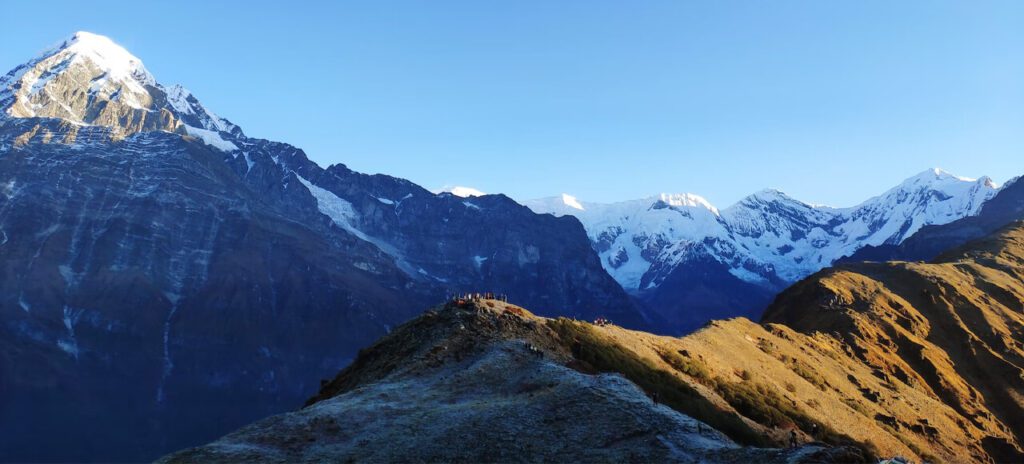
At higher altitudes, temperatures can go below freezing, with nighttime temperatures dropping to –10 degrees Celsius (14 degrees Fahrenheit) or even lower.
Precipitation
January is also part of the dry season in Mardi Himal, but it can still receive some snowfall or light rain. The higher altitudes are more likely to experience snowfall, while the lower areas might have occasional rainfall. It is advisable to be prepared for wet conditions and ensure you have proper waterproof gear.
Visibility
Weather conditions in January can be unpredictable, and you may encounter fog, mist, or clouds, especially in the early morning and late afternoon.

However, on clear days, you can enjoy breathtaking panoramic views of the snow–capped mountains and pristine landscapes.
Popular: Luxury Tour Packages for Couples in Nepal
Trail Conditions
The trekking trails in January can be challenging due to the presence of snow and ice at higher elevations. You might need to use crampons or other traction devices to navigate slippery sections. It is important to exercise caution and trek with an experienced guide who is familiar with the conditions.
Highlights of Mardi Himal Trek in January
Let’s explore the highlights of embarking on this mesmerizing adventure during January:
Tranquil Winter Scenery:
January is considered the winter season in Nepal, and embarking on the Mardi Himal Trek during this time provides a unique experience. The trail is usually less crowded, allowing you to immerse yourself in the tranquil beauty of the snow–covered landscapes.
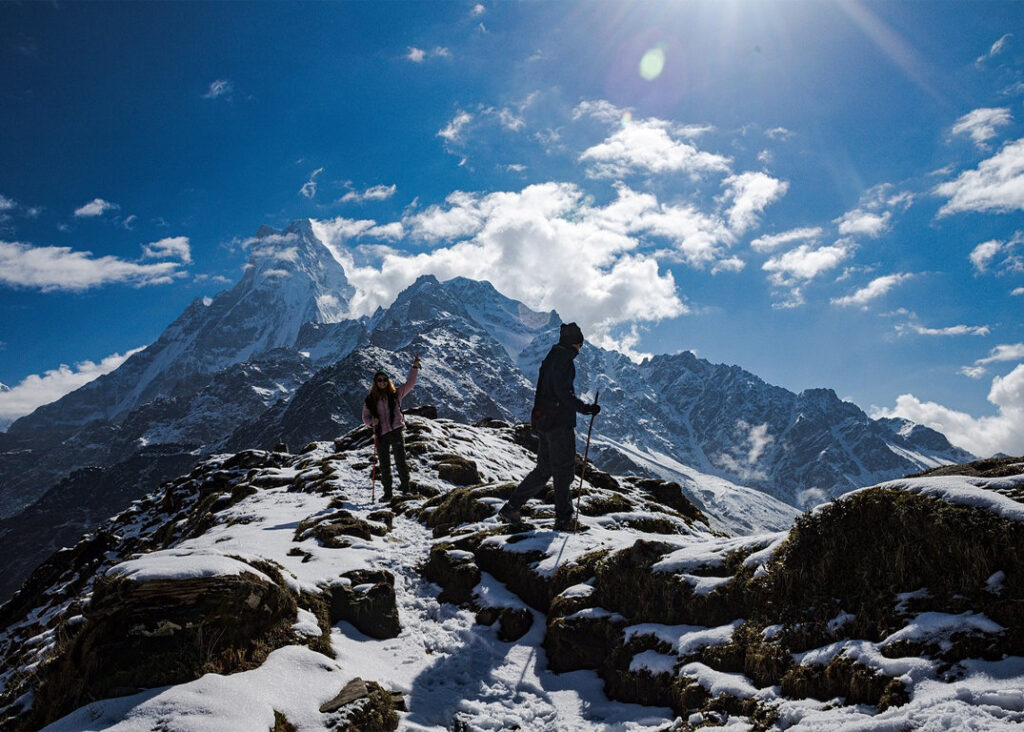
As you trek through forests blanketed in snow, you’ll be surrounded by an enchanting white wonderland, creating a picturesque setting that will leave you awestruck.
Spectacular Mountain Views:
One of the major highlights of the Mardi Himal Trek is the breathtaking views of the majestic Annapurna and Machhapuchhre (Fishtail) mountains. In January, the weather is generally clear, offering excellent visibility of the snow–capped peaks.

As you ascend higher, each turn in the trail reveals panoramic vistas that will leave you speechless. The sight of the golden sunrise illuminating the snow-covered mountains is truly a sight to behold and capture in your memories forever.
Cultural Encounters:
Apart from the natural beauty, the Mardi Himal Trek also provides an opportunity to immerse yourself in the rich cultural heritage of the region. During the trek, you will pass through charming traditional villages inhabited by Gurung and Magar communities.
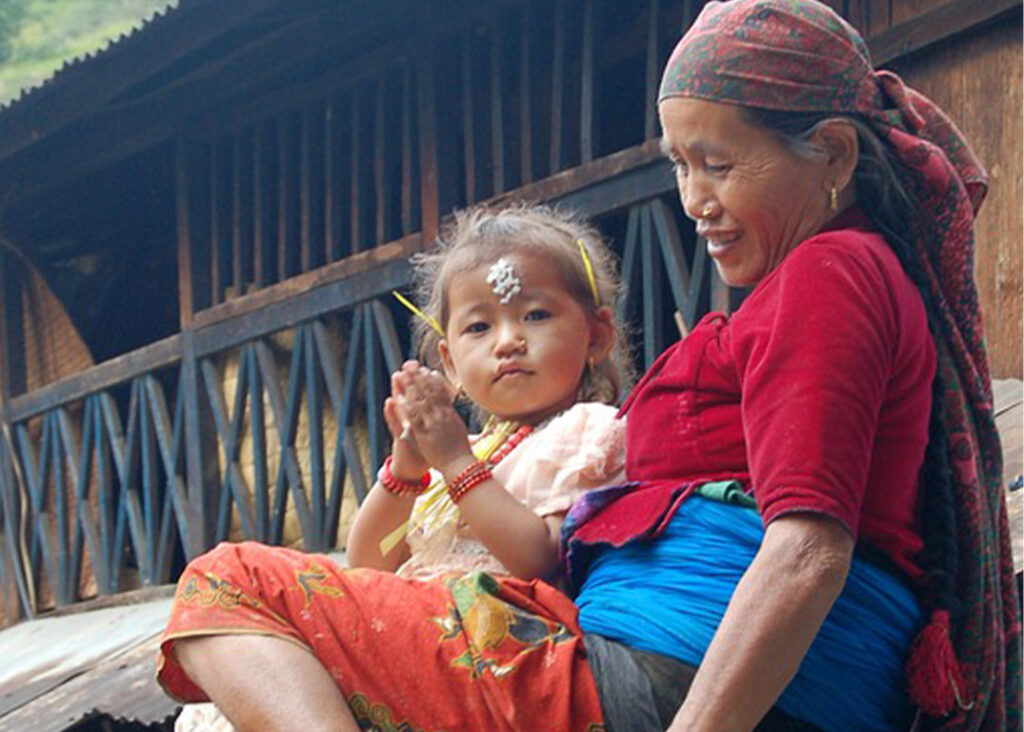
You can engage with the locals, learn about their unique way of life, and experience their warm hospitality. January is a festive month in Nepal, and if you’re lucky, you might witness traditional cultural celebrations and festivities along the way.
Peaceful Trail and Fewer Trekkers:
Compared to popular treks like Annapurna Base Camp and Everest Base Camp, the Mardi Himal Trek is relatively lesser-known, making it perfect for those seeking a more secluded and peaceful trekking experience.
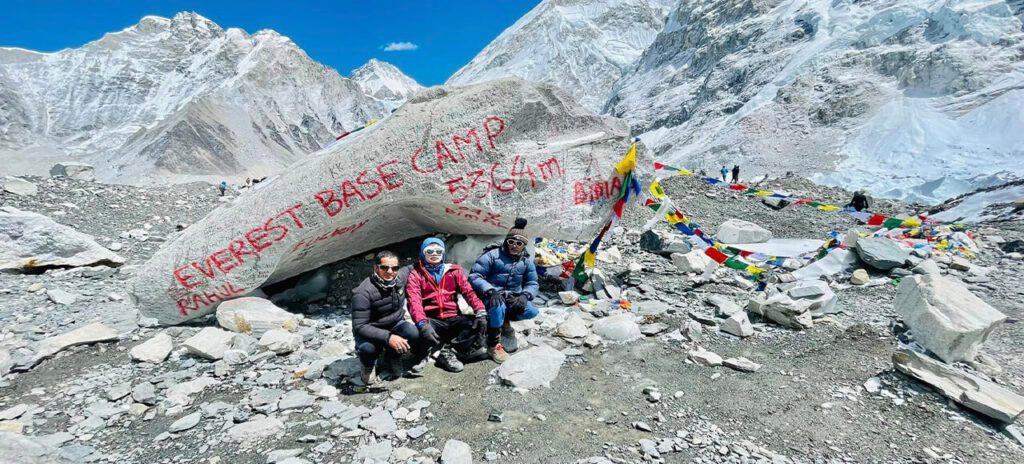
In January, the number of trekkers is significantly lower, allowing you to enjoy the serenity of nature and find solitude amidst the mountains. The tranquil atmosphere allows you to connect with nature on a deeper level and reflect on your journey.
Unique Teahouse Experience:
Teahouses are an integral part of the trekking culture in Nepal. Along the Mardi Himal Trek, you’ll have the opportunity to stay in cozy teahouses nestled amidst the mountains. During the winter season, these teahouses offer a warm and welcoming atmosphere, where you can savor delicious traditional meals and hot beverages, rejuvenating your body and soul after a day of trekking.
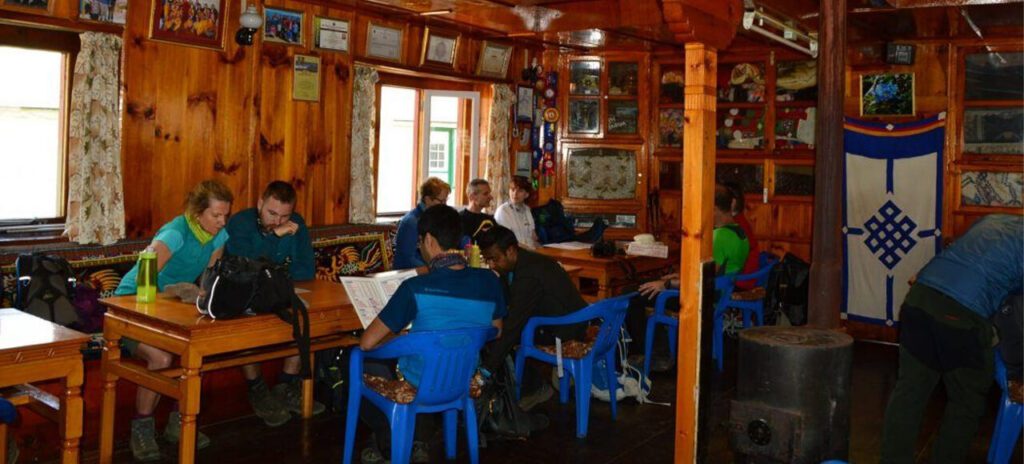
The evenings spent around a crackling fireplace, swapping stories with fellow trekkers, are an experience in themselves.
Kathmandu to Mardi Himal Trek
To get to the Mardi Himal Trek from Kathmandu, you would typically follow these steps:
Fly to Pokhara
The starting point for the Mardi Himal Trek is usually Pokhara which is a city located around 200 kilometers west of Kathmandu.
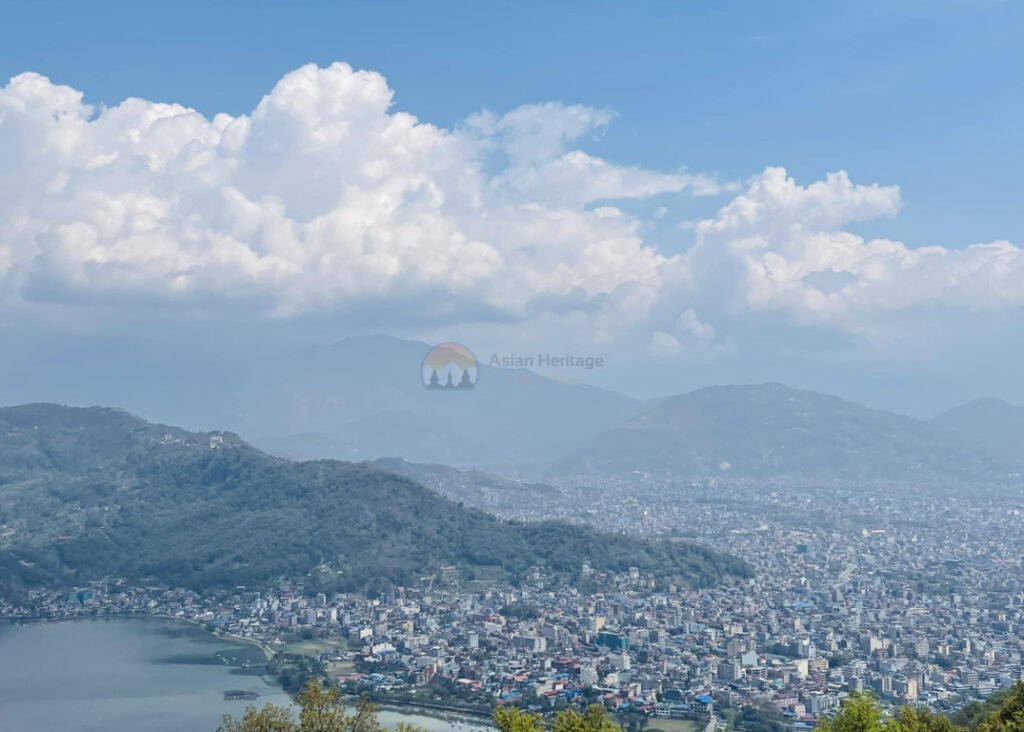
You can take a domestic flight from Kathmandu to Pokhara which takes about 25–30 minutes. Alternatively, you can also take a tourist bus from Kathmandu to Pokhara, which takes approximately 6-7 hours.
Travel from Pokhara to Kande
From Pokhara, you need to reach Kande, the starting point of the trek. To get there, you can hire a private taxi or take a shared jeep from Pokhara’s tourist bus park. The journey from Pokhara to Kande takes around 1.5 to 2 hours, depending on road conditions.
You may also like: Best Seasons and Months to Trek in Nepal
Start the Trek
Once you reach Kande, you can begin your trek to Mardi Himal. The trail will take you through beautiful forests, picturesque villages, and scenic landscapes. The trek is typically completed in about 5-7 days depending on your pace and itinerary.

Note: It’s essential to obtain the necessary permits for the Mardi Himal Trek such as the Annapurna Conservation Area Permit (ACAP) and Trekkers‘ Information Management System (TIMS) card. You can obtain these permits in Kathmandu or Pokhara before starting your trek.
Festivals
Mardi Himal Trek is a popular trekking destination in the Annapurna region of Nepal. While there are no specific festivals celebrated exclusively in the Mardi Himal Trek area in January, you may encounter trekkers and locals celebrating the following major festivals of Nepal during that time:
New Year’s Day (January 1st)
New Year’s Day is celebrated worldwide, and Nepal is no exception. While it is not a traditional Nepali festival, people in urban areas often gather with friends and family to celebrate the beginning of the Gregorian calendar year. They exchange greetings, enjoy special meals, and participate in parties and events.
Maghe Sankranti (Mid-January)
Maghe Sankranti is one of the most important festivals in Nepal, which marks the end of the winter solstice. It is celebrated on the first day of the Nepali month of Magh (around mid–January). People wake up early and take holy dips in rivers, especially at the confluence of sacred rivers like the Triveni in Devghat, Chitwan.

They believe that taking these dips washes away their sins. Families gather together and enjoy traditional delicacies like ghee, yams, and sweets made of sesame seeds.
Side Treks
During the Mardi Himal Trek, there are several favorable side treks that you can undertake to enhance your overall experience. The Mardi Himal Trek itself is a beautiful and less crowded trek in the Annapurna region of Nepal, offering stunning views of the Annapurna and Dhaulagiri mountain ranges.
More: Embracing Nepali Culture and Basic Etiquette
Here are some of the favorable side treks you can consider during the Mardi Himal Trek:
Sidhing Village:
Located at an altitude of around 1,529 meters, Sidhing Village is a charming Gurung village that lies on the route to Mardi Himal Base Camp. The village provides an opportunity to experience the local culture, interact with the friendly villagers, and witness their traditional lifestyle.

You can take a detour from the main trail and spend a day exploring the village, enjoying the picturesque surroundings and panoramic views of the mountains.
Forest Camp
As you ascend towards the Mardi Himal Base Camp, you’ll pass through the Forest Camp, also known as Kokar. This serene campsite is nestled amidst lush rhododendron and oak forests.

Taking a short side trek to Forest Camp allows you to immerse yourself in the enchanting beauty of the forest, listen to the sounds of nature, and spot various bird species. It’s a perfect spot for nature lovers and bird enthusiasts.
Badal Danda
Badal Danda, meaning “Cloud Hill,” is an elevated viewpoint that offers breathtaking panoramic views of the Annapurna and Machhapuchhre (Fishtail) mountains. At an altitude of around 3,210 meters, you can hike to Badal Danda as a day trip from the High Camp during the Mardi Himal Trek.
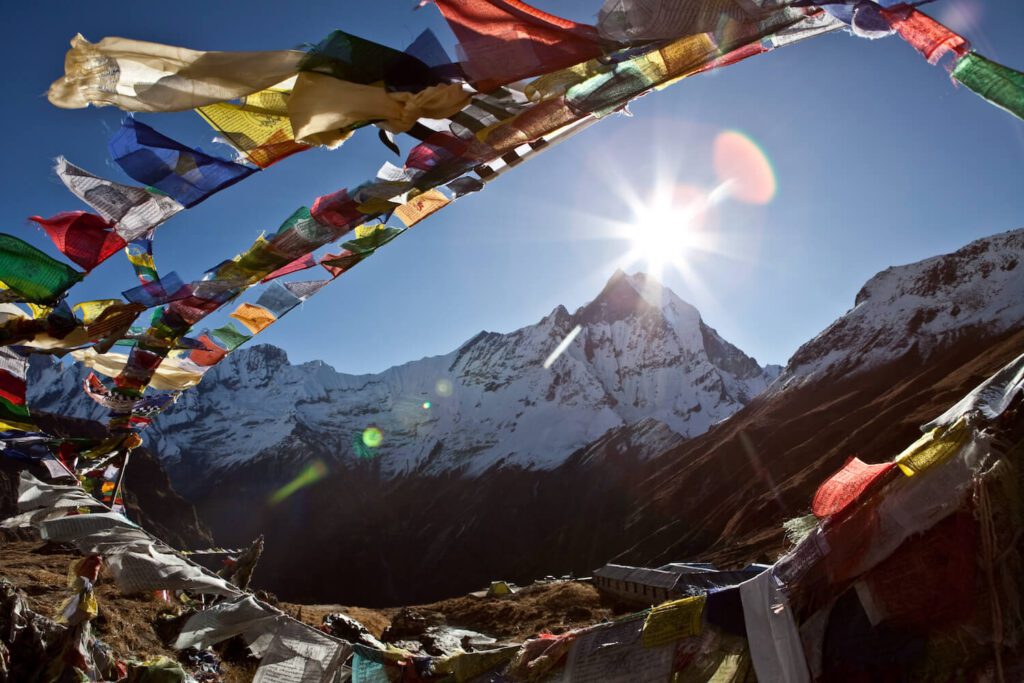
The mesmerizing sunrise and sunset views from this viewpoint are truly awe-inspiring and make it a memorable experience.
Australian Base Camp
Australian Base Camp is a popular viewpoint located at an altitude of around 2,060 meters. Although it is not directly on the Mardi Himal Trek route, it can be easily reached by taking a detour from Landruk Village.
The viewpoint provides breathtaking views of the Annapurna and Dhaulagiri mountain ranges, along with a stunning panorama of the Pokhara Valley. It’s a great spot to relax, enjoy the scenery, and capture some memorable photographs.
Flora
This off-the-beaten-path adventure offers breathtaking mountain vistas, serene landscapes, and a chance to witness the region’s rich biodiversity. Among the many wonders of the Mardi Himal Trek is its diverse flora which showcases its beauty throughout the year.
Let’s take a closer look into the fascinating flora that can be found during the Mardi Himal Trek in the month of January.
Oak Trees
As you ascend through the lower elevations of the Mardi Himal Trek, you’ll encounter dense forests dominated by majestic oak trees. The evergreen oak forests provide shelter to a variety of wildlife and offer a refreshing shade during your trek. In January, the oak trees are usually covered in moss and lichens, adding an ethereal touch to the surroundings.
Junipers
As you continue your journey towards higher altitudes, the oak forests give way to juniper bushes. January is an ideal time to witness the junipers in full bloom. These aromatic plants, with their needle–like leaves and small berry–like cones, create a picturesque landscape against the snowy backdrop. The fresh fragrance of junipers wafting through the air adds a sensory delight to your trekking experience.
Also Check: Tengboche Monastery: The oldest monastery in Khumbu
Alpine Meadows
As you reach the alpine zone, the Mardi Himal Trek presents you with breathtaking meadows dotted with a variety of flora. In January, these meadows might still be covered in a thin layer of snow, creating a dreamlike ambiance.

Amidst the white blanket, you may find hardy alpine flowers such as edelweiss, primroses, and gentians, which bloom even in the harshest conditions, showcasing nature’s resilience.
Bamboo Groves
Descending from the higher altitudes, you’ll encounter bamboo groves that lend a distinct charm to the trek. The bamboo forests are abundant in January, and their tall, slender stalks create a soothing atmosphere as they sway gently with the mountain breeze.

The rustling sound of the bamboo leaves and the play of light filtering through the canopy offer a peaceful respite during your descent.
Pine Trees
In addition to the diverse range of flora mentioned earlier, pine trees are another noteworthy feature of the Mardi Himal Trek in January. As you ascend through the lower to mid-elevations, you’ll encounter lush pine forests that contribute to the picturesque scenery.

The evergreen pines, with their tall trunks and needle-like leaves, create a serene and soothing atmosphere.In January, the dusting of snow may adorn these trees, enhancing the charm of the landscape and providing a beautiful contrast against the blue sky.
Fauna
While the breathtaking landscapes and towering peaks steal the spotlight, this enchanting trail is also home to a diverse array of wildlife. From rare Himalayan species to colorful avian wonders, the Mardi Himal Trek offers a fascinating opportunity to encounter nature’s finest creations. Let’s explore some of the captivating animals that can be found along this spectacular journey.
Red Panda
One of the most sought-after creatures in the Himalayas, the red panda is a delightful sight to behold. Known for its striking red coat, masked face, and bushy tail, this arboreal mammal can be spotted in the lush forests surrounding the Mardi Himal trail.

Watch as it nimbly navigates the treetops, feasting on bamboo shoots and occasionally indulging in fruits and insects. Keep your camera ready, as a glimpse of this elusive creature is sure to be a highlight of your trek.
Himalayan Monal
Prepare to be dazzled by the resplendent colors of the Himalayan Monal, a stunning pheasant species found in the Mardi Himal region. With its iridescent plumage featuring shades of emerald, copper, and gold, this avian wonder is a true showstopper.
You may spot them gracefully moving through the underbrush or hear their melodious calls echoing through the forests. These vibrant birds add a touch of magic to the already captivating landscapes of the trek.
Musk Deer
Venture deeper into the Mardi Himal trail, and you might come across the elegant musk deer. Known for their solitary nature, these small, deer-like creatures inhabit the alpine forests and rhododendron-covered hillsides.

Although elusive, their distinctive fang-like canines and musky scent glands make them instantly recognizable. Take a moment to appreciate their graceful presence as they forage for grasses, leaves, and twigs in their natural habitat.
Himalayan Tahr
Prepare yourself for encounters with the Himalayan tahr, a charismatic mountain ungulate that roams the rugged slopes of the Annapurna region.

These sure-footed creatures have adapted to the rocky terrain. Moreover, their short, stocky bodies and curved horns enable them to navigate the steep cliffs with ease. Additionally, you can marvel at their agility as they gracefully traverse the alpine meadows, contributing to the tapestry of wildlife that thrives in this pristine environment.
Snow Leopard
While spotting a snow leopard in the wild is a rare and extraordinary event, the Mardi Himal Trek lies within the range of this elusive big cat. These magnificent creatures are masters of camouflage, blending seamlessly into their snowy surroundings.
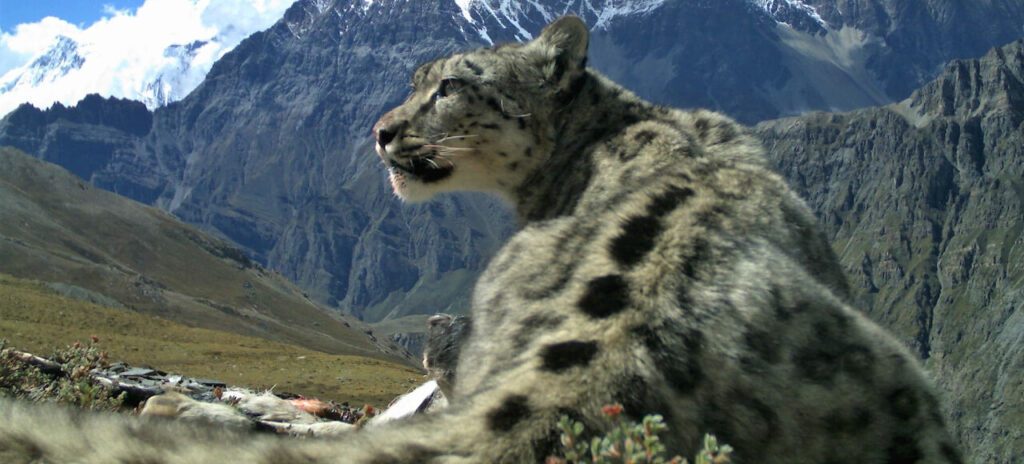
Though sightings are infrequent, the knowledge that these elusive predators inhabit the region adds an air of mystery and excitement to the trek. If you’re exceptionally lucky, you may catch a glimpse of these majestic creatures from afar.
Conclusion
The Mardi Himal Trek is a hidden gem that offers a unique and enchanting adventure through the stunning Annapurna region of Nepal. From the breathtaking mountain vistas and diverse landscapes to the warm interactions with local communities, this trek provides an unforgettable experience for trekkers seeking tranquility and natural beauty.
If you’re looking for a lesser-known trek that combines awe-inspiring scenery with a sense of solitude, the Mardi Himal Trek should undoubtedly be on your list. Embark on this remarkable journey and create memories that will last a lifetime.
Let our expert team at Asian Heritage Treks and Travel take care of everything — from guided tours to personalized packing tips and travel arrangements.
Plan an exciting trip







